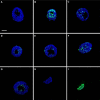Effects of in vitro exposure to dibutyl phthalate, mono-butyl phthalate, and acetyl tributyl citrate on ovarian antral follicle growth and viability
- PMID: 28486587
- PMCID: PMC6373836
- DOI: 10.1095/biolreprod.116.144691
Effects of in vitro exposure to dibutyl phthalate, mono-butyl phthalate, and acetyl tributyl citrate on ovarian antral follicle growth and viability
Abstract
Dibutyl phthalate (DBP) is present in consumer products and the coating of some oral medications. Acetyl tributyl citrate (ATBC) has been proposed as an alternative to DBP because DBP causes endocrine disruption in animal models. Following ingestion, DBP is converted to its main metabolite mono-butyl phthalate (MBP) which has been detected in >90% of human follicular fluid samples. Previous studies show that DBP reduces the number of antral follicles present in the ovaries of mice. Thus, this study was designed to evaluate the effects of DBP, MBP, and ATBC on in vitro growth and viability of mouse ovarian antral follicles. Antral follicles were isolated from CD-1 females (PND32-37) and treated with vehicle, DBP, MBP, or ATBC (starting at 0.001 and up to 1000 μg/ml for DBP; 24-72 h). Follicle diameter, ATP production, qPCR, and TUNEL were used to measure follicle growth, viability, cell cycle and apoptosis gene expression, and cell death-associated DNA fragmentation, respectively. While MBP did not cause toxicity, DBP exposure at ≥10 μg/ml resulted in growth inhibition followed by cytoxicity at ≥500 μg/ml. ATBC increased the number of nongrowing follicles at 0.01 μg/ml and did not affect ATP production, but increased TUNEL positive area in treated follicles. Gene expression results suggest that cytotoxicity in DBP-treated follicles occurs via activation of cell cycle arrest prior to follicular death. These findings suggest that concentrations of DBP ≥10 μg/ml are detrimental to antral follicles and that ATBC should be examined further as it may disrupt antral follicle function at low concentrations.
Keywords: acetyl tributyl citrate; antral follicle; apoptosis; cell cycle; dibutyl phthalate; endocrine disruptor; mono-butyl phthalate; ovary; phthalate substitute; toxicology.
© The Authors 2017. Published by Oxford University Press on behalf of Society for the Study of Reproduction. All rights reserved. For permissions, please e-mail: journals.permissions@oup.com.
Figures








Similar articles
-
Di-n-butyl phthalate disrupts the expression of genes involved in cell cycle and apoptotic pathways in mouse ovarian antral follicles.Biol Reprod. 2013 Jan 31;88(1):23. doi: 10.1095/biolreprod.112.105122. Print 2013 Jan. Biol Reprod. 2013. PMID: 23242528 Free PMC article.
-
Developmental toxicity of dibutyl phthalate and citrate ester plasticizers in Xenopus laevis embryos.Chemosphere. 2018 Aug;204:523-534. doi: 10.1016/j.chemosphere.2018.04.077. Epub 2018 Apr 15. Chemosphere. 2018. PMID: 29684872
-
Effects of oral exposure to the phthalate substitute acetyl tributyl citrate on female reproduction in mice.J Appl Toxicol. 2017 Jun;37(6):668-675. doi: 10.1002/jat.3413. Epub 2016 Nov 20. J Appl Toxicol. 2017. PMID: 27866379 Free PMC article.
-
Quantitative label-free proteomic analysis of mouse ovarian antral follicles following oral exposure to a human-relevant mixture of three phthalates.Toxicol Sci. 2024 Oct 1;201(2):226-239. doi: 10.1093/toxsci/kfae089. Toxicol Sci. 2024. PMID: 38995844 Free PMC article.
-
Effects of an Environmentally Relevant Phthalate Mixture on Cultured Mouse Antral Follicles.Toxicol Sci. 2017 Mar 1;156(1):217-229. doi: 10.1093/toxsci/kfw245. Toxicol Sci. 2017. PMID: 28013214 Free PMC article.
Cited by
-
Phthalate and Organophosphate Plasticizers in Nail Polish: Evaluation of Labels and Ingredients.Environ Sci Technol. 2018 Nov 6;52(21):12841-12850. doi: 10.1021/acs.est.8b04495. Epub 2018 Oct 10. Environ Sci Technol. 2018. PMID: 30302996 Free PMC article.
-
Environmentally relevant exposure to dibutyl phthalate disrupts DNA damage repair gene expression in the mouse ovary†.Biol Reprod. 2019 Oct 25;101(4):854-867. doi: 10.1093/biolre/ioz122. Biol Reprod. 2019. PMID: 31318015 Free PMC article.
-
The effects of endocrine-disrupting chemicals on ovarian- and ovulation-related fertility outcomes.Mol Reprod Dev. 2022 Dec;89(12):608-631. doi: 10.1002/mrd.23652. Epub 2022 Nov 19. Mol Reprod Dev. 2022. PMID: 36580349 Free PMC article. Review.
-
Assessing effects of germline exposure to environmental toxicants by high-throughput screening in C. elegans.PLoS Genet. 2019 Feb 14;15(2):e1007975. doi: 10.1371/journal.pgen.1007975. eCollection 2019 Feb. PLoS Genet. 2019. PMID: 30763314 Free PMC article.
-
Updates on molecular and environmental determinants of luteal progesterone production.Mol Cell Endocrinol. 2020 Sep 15;515:110930. doi: 10.1016/j.mce.2020.110930. Epub 2020 Jun 28. Mol Cell Endocrinol. 2020. PMID: 32610113 Free PMC article. Review.
References
-
- Jobling S, Bjerregaard P, Blumberg B, Brandt I, Brian J, Casey S, Frouin H, Guidice L, Heindel J, Iguchi T, Kidd K, Kortenkamp A et al. . Evidence for endocrine disruption in humans and wildlife. In: Bergman A, Heinder J, Jobling S, Kidd K, Zoeller R (eds.), State of the Science of Endocrine Disrupting Chemicals, Switzerland: United Nations Environment Programme and the World Health Organization; 2012: 23–188.
-
- Centers for Disease Control and Prevention Third national report on human exposure to environmental chemicals. 2005; NCEH Pub. No. 05-0570.
MeSH terms
Substances
Grants and funding
LinkOut - more resources
Full Text Sources
Other Literature Sources
Miscellaneous

